Craft production - introduction
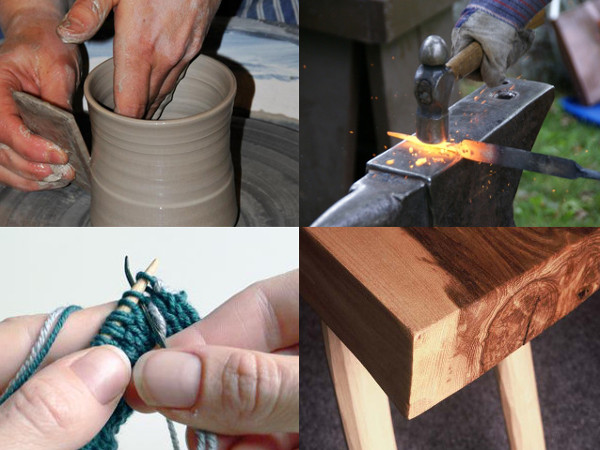
“Nothing should be made which is not worth making, or which must be made by labour degrading to the makers.” – William Morris
Contents
What is craft production?
Craft (or artisan) production is about making (and repairing) useful (and often beautiful) things using a combination of hands and brain. Craft skills need time to acquire, and the work is often labour-intensive. Craft production can provide us with a range of goods such as clothes, utensils, consumables, furniture, jewellery, toys, and useful items involving metal, wood, stone and various other natural or recycled materials. At the margins of the genre are foods (craft beers, artisan bread etc.), trades such as plumbing, electrical or building work, and these days even high-tech ‘crafts’ such as 3D printing or creating free software.

History
All production was artisanal until enclosures of land pushed people from their rural smallholdings and into urban factories. Prior to this, craftspeople in various trades organised themselves into guilds in most cities across Europe, throughout the Middle Ages. The guilds provided apprenticeships (often to young people escaping serfdom, and so were a catalyst for ending feudalism), guaranteed quality, and excluded craftsmen found guilty of cheating the public. They often grew to dominate their cities, from their guildhalls, but were eventually overshadowed by the centralised power of the state. In the countryside, away from the influence of the guilds, merchants travelled between the cottages of craft spinners, providing them with raw materials, taking away and selling their finished cloth and keeping a share of the profits – the beginnings of capitalism. As new machines were developed – such as the Spinning Jenny, bringing many workers together in water-powered factories – much craft work began to become obsolete, sparking an unsuccessful backlash by the Luddites.

Post-Industrial-Revolution, mass-production meant lower-quality, but cheaper goods that were affordable by low-paid workers. The 19th century Arts & Crafts Movement was a reaction to the loss of craft skills and the terrible conditions in early factories. One of their (and our) main principles was that the intellectual work of designing products should not be separate from the physical work of manufacture. They believed that craft production leads to more well-rounded individuals and a better society; but they couldn’t stem the tide. Some traditional crafts will probably never return (barring civilisational collapse) – no-one wants to make nails all day; but plenty of people want to make clothes, furniture, pottery or glassware etc.
Now craft skills are being lost all over the world, as workers in poor countries are forced into sweatshops to make low-quality corporate products for a pittance; but there’s growing interest in craft production (especially in food and drink) in more developed countries. Who knows how many of the world’s goods can come from craft production? Maybe some things (nails?) can be made via democratically-owned (rather than corporate) mass production, and others (the pleasurable ones?) made by hand.

What are the benefits of craft production?
Environment
- Supply chains are shortened, reducing fossil fuel requirement to transport goods.
- Materials are often natural and biodegradable.
- Quality is higher, so goods last longer (and can be repaired), and stay out of landfill for longer; no ‘planned obsolescence’.

Community
- Profits stay in the community, rather than being sucked out to pay corporate shareholders.
- Small producers pay their fair share of taxes, whereas the corporates can afford expensive lawyers to ensure that they don’t.
- Communities become more resilient to wider economic crashes, or even civilisational collapse.
- Craft production is part of a new kind of economy, in which people produce to exchange for goods that others have produced, rather than trying to make more and more money; a community built around small producers could be a much safer and healthier place.
Quality of life
- For producers: autonomous, interesting, meaningful work.
- For consumers: high-quality, durable, unique, beautiful products.

What can I do?
First of all – if you can, purchase things from craft producers. If more people do this, then if you decide to give it a go yourself, you’ll have a larger market to sell to.
Re-skilling
Have a go at something you find interesting; produce things for yourself, friends and family first, as a hobby; then maybe think about turning it into a job. See our individual craft topics to get more information and to find organisations and course providers that can help you; and also craft producers that you can support by purchasing from them.
Don’t worry that you won’t be good enough; you need a certain amount of determination if you’re going to make a career in crafts. As Richard Sennett said: ‘we are more likely to fail as craftspeople due to lack of motivation than lack of ability’.

Scale
It’s probably not a good idea environmentally if everyone tries to make their own pottery, glassware, forged metal goods, soaps etc. in their own households. It’s more efficient to do those kinds of things at the community level, and to trade with each other. Every community could support one or two potters, weavers, bakers, brewers, blacksmiths etc. Craft production for trade represents the sustainable middle ground between giant corporations and attempts at self-sufficiency.
Prices
Craft produce is expensive. But if you see a suspiciously cheap mug or T-shirt, you know that costs are being externalised – in other words, someone is getting exploited somewhere, and the environment is being damaged too.
This problem can be solved by committing to purchase from each other – to be each other’s customers. Put simply, what does it matter if the bread that you bake, the furniture that she makes and the baskets that I make are all expensive? If we commit to trade with each other, then we all get quality products and services and we all make a good income. This can be as true in Indonesia, for people currently working in terrible conditions in corporate sweatshops as it can in suburban London or working-class towns in the north of England.
It will involve a shift in thinking. Rather than seeing ourselves solely as consumers, we move towards becoming producers as well as consumers – ‘prosumers’, if you like. As consumers, we want prices to be as low as possible – but not if we’re also producers.

Mutual credit
One way to develop these groups of community-based businesses that trade with each other is via a mutual credit club. Mutual credit is a moneyless exchange system in which businesses trade via numbers in an account, not money. Here’s an introduction to mutual credit, and below is part of a conversation with a craft partner of ours – a weaver who understands the potential of mutual credit.
“We’ve been talking about mutual credit quite a lot. My position is that if you’re a producer as well as a consumer, the attitude to price is different. So if a weaver and a potter are in the same community – at some point he’s going to need clothes from you and you’re going to need mugs, plates and bowls from him. And there’ll be lots of other trades represented in the community, that everyone needs – including food, energy, builders, couriers, printers, etc. If you’re producing things for, as well as consuming things from this local market, you’ll be receiving higher prices as well as paying higher prices. So they cancel each other out – and everyone gets higher-quality, sustainable goods; and your job becomes more interesting – you’re not on the slippery slope to the Amazon warehouse or Über cab.
If you live in a community that hosts a mutual credit club, and you can join a group of 100-200 people who are committed to providing goods and services to that club, and also trying to get as much as they can from that club, then you could take the time to learn a skill, and then join this group of people who are committed to buying from you, as long as you buy from them. You’ll have a local market for your work.

The alternative is pretty grim. In your local town, no-one would let you use slave labour. You’d be ostracised. But corporations that do that are accepted; and they monopolise markets. If we can develop a new kind of economy that uses corporations less and less, we can start to stamp out these kinds of activities. Also, maybe one of the things a mutual credit club could launch straight away is a shop premises. There are lots of shops boarded up in towns. Get a shop, put all the local produce in it, including food and craft produce, so that people can pick it up and have a look at it – but also advertising for conventional business services that accept mutual credit.”
Is this realistic? Not if we don’t try.


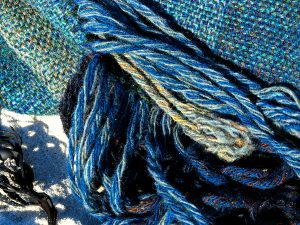

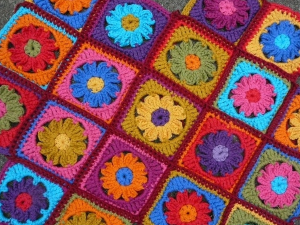
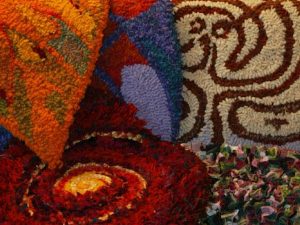
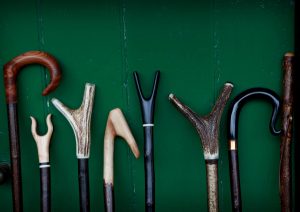
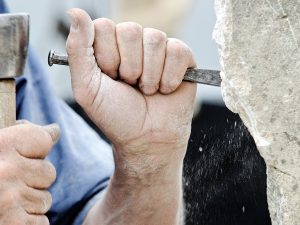
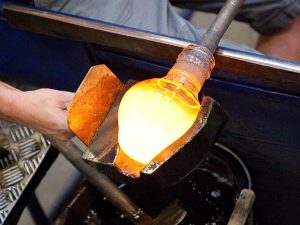
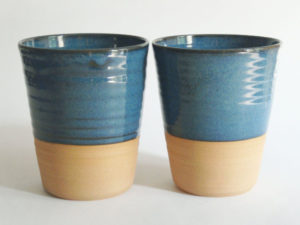
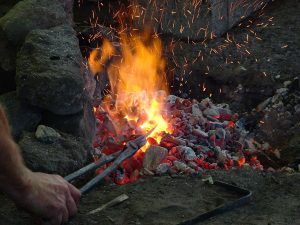
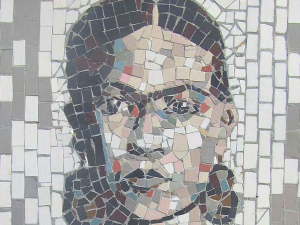
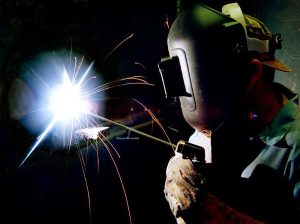
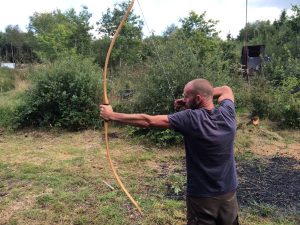
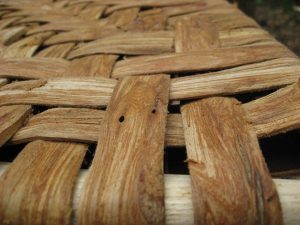
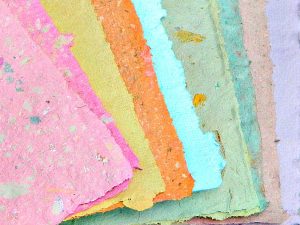

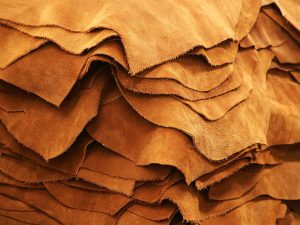
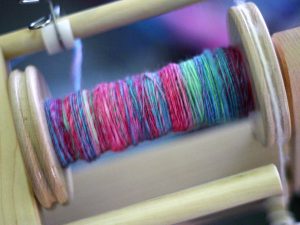
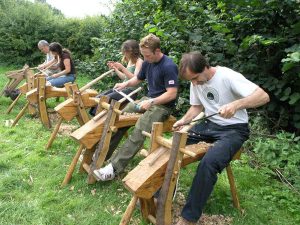
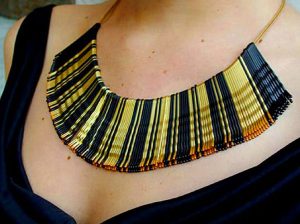
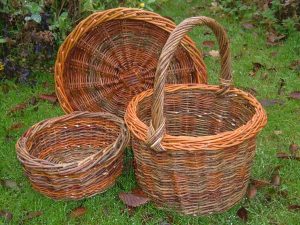


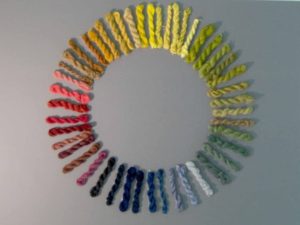
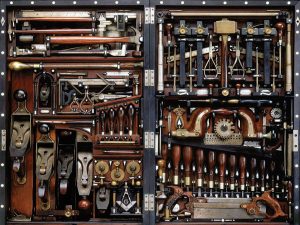
2 Comments
some useful information for any members who spin textiles by hand can be found on this pdf about making clothes in neolithic Briton, https://link.springer.com/content/pdf/10.1007%2Fs12520-018-0677-8.pdf
It also has a diagram showing how they use to splice new fibers into threads without using spinning. I thought it may be of use for Low Impact to add the link in the appropriate section for members to access, have a look and see what you think!
Thanks Steve – I’ve put it in spinning links for now, but we’re getting ‘natural cordage’ topic at some point.